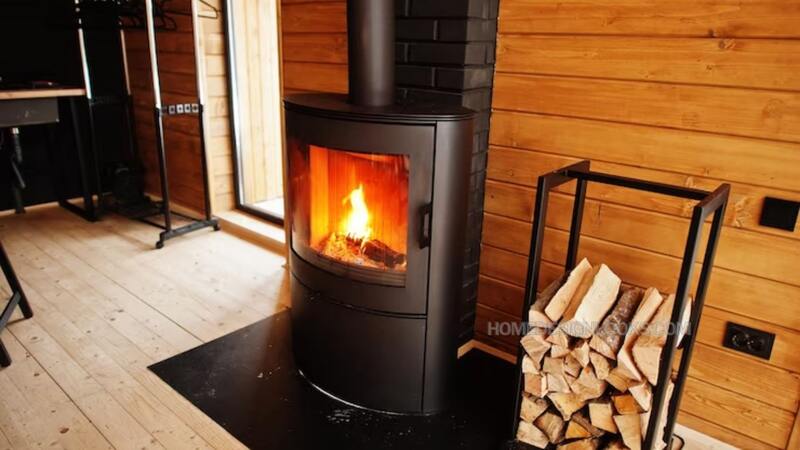How to Clean a Chimney with a Bend: A Comprehensive Guide on Using a Bend
Picture this: a crackling fire, warmth enveloping the room, and the comforting aroma of burning wood. A well-maintained chimney is essential for a cozy and safe fireplace experience. In this guide, we’ll delve into the intricate process of Clean a Chimney with a Bend, ensuring your home remains snug and secure.
Section 1: Understanding the Importance of Chimney Cleaning
Begin by emphasizing the significance of regular chimney cleaning. Highlight the potential risks of neglecting this task, such as chimney fires, carbon monoxide buildup, and reduced heating efficiency. Establish a connection between a clean chimney and a safe, efficient, and cost-effective heating system.
Section 2: Tools and Materials You’ll Need
Outline the tools required for the job, including a chimney brush, rods, a vacuum, and protective gear. Explain the importance of choosing the right-sized brush and rods to match the dimensions of your chimney.

Section 3: Safety First – Preparing for the Job
Emphasize safety precautions, such as wearing goggles, a dust mask, and gloves. Guide readers on how to protect the surrounding area with drop cloths or plastic sheets to minimize the mess.
Section 4: Step-by-Step Guide to Cleaning a Chimney with a Bend
- Inspect the Chimney: Before diving in, inspect the chimney for any visible issues like cracks, creosote buildup, or obstructions.
- Prepare the Fireplace: Safeguard the fireplace area by covering it with a tarp or plastic sheet to catch falling debris.
- Attach the Brush to Rods: Assemble the chimney brush with the necessary rods. Extend the rods gradually while gently scrubbing the interior walls of the chimney.
- Scrubbing Motion: Demonstrate the proper scrubbing motion, focusing on removing creosote and soot buildup. Highlight the significance of a thorough cleaning for optimal chimney performance.
- Vacuuming: Use a vacuum to collect loosened debris, preventing it from settling in the fireplace or entering your living space.
Section 5: Post-Cleaning Inspection
Encourage readers to conduct a post-cleaning inspection to ensure no damage has occurred during the process. Advise on the signs of a clean chimney, such as reduced smoke, improved draft, and enhanced fireplace efficiency.
Frequently Asked Questions (FAQ) about How to Clean a Chimney with a Bend

Q1: Why is it necessary to clean my chimney regularly?
A1: Regular chimney cleaning is crucial to prevent potential hazards such as chimney fires, carbon monoxide buildup, and to ensure efficient heating. Accumulated creosote and debris can pose serious risks if neglected.
Q2: How often should I clean my chimney?
A2: The frequency of chimney cleaning depends on usage. For regular wood-burning fireplaces, an annual cleaning is recommended. However, if you use your fireplace more frequently, consider cleaning it twice a year.
Q3: Can I clean my chimney without professional help?
A3: Yes, chimney cleaning can be a DIY task. With the right tools, safety precautions, and guidance, homeowners can effectively clean their chimneys. However, if you are uncertain or encounter issues, it’s advisable to consult a professional chimney sweep.
Q4: What tools do I need to clean a chimney with a bend?
A4: Essential tools include a chimney brush, rods, a vacuum, goggles, a dust mask, and gloves. Ensure you choose a brush and rods that match the dimensions of your chimney for effective cleaning.
Q5: Is it necessary to cover the fireplace during cleaning?
A5: Yes, covering the fireplace with a tarp or plastic sheet is recommended to prevent debris from falling into the living space. It also makes the cleanup process more manageable.
Q6: How do I know if my chimney is clean after the process?
A6: Signs of a clean chimney include reduced smoke, improved draft, and increased fireplace efficiency. Conduct a post-cleaning inspection to ensure no damage has occurred during the cleaning process.
Q7: Can I use any vacuum for chimney cleaning?
A7: Use a vacuum specifically designed for ash and soot removal. Standard household vacuums may not have the necessary filtration, and the fine particles can damage the vacuum or be released back into the air.
Q8: What should I do if I encounter issues during the cleaning process?
A8: If you encounter difficulties or notice any damage, it’s advisable to stop the cleaning process and seek professional assistance. Chimney issues should be addressed promptly to ensure safety.
Q9: Can I clean the chimney while there is a fire burning?
A9: No, chimney cleaning should be done when the fireplace is cold to avoid injury and ensure effective cleaning. Always wait until the fire has completely extinguished and the chimney is cool before starting the cleaning process.
Conclusion:

Wrap up the article by reiterating the importance of regular chimney maintenance and how mastering the art of cleaning a chimney with a bend contributes to a safer and more enjoyable home environment. Encourage readers to embrace this DIY task with confidence, ensuring a winter filled with warmth and worry-free fireplace experiences.
Remember, safety and thoroughness are key when undertaking chimney cleaning, and this guide equips you with the knowledge to tackle the task effectively.
Also, visit Home Design Looks for more quality information.

